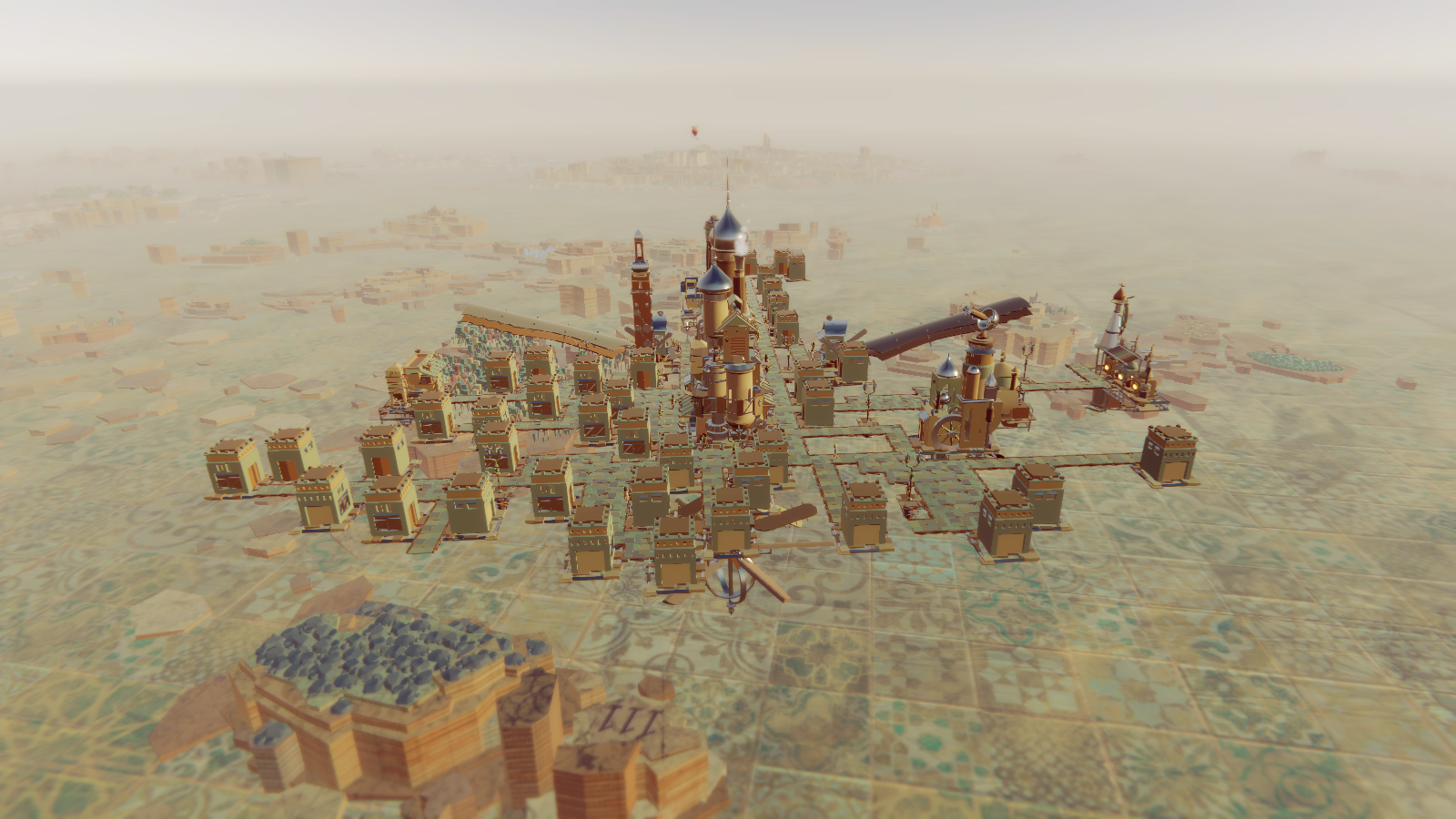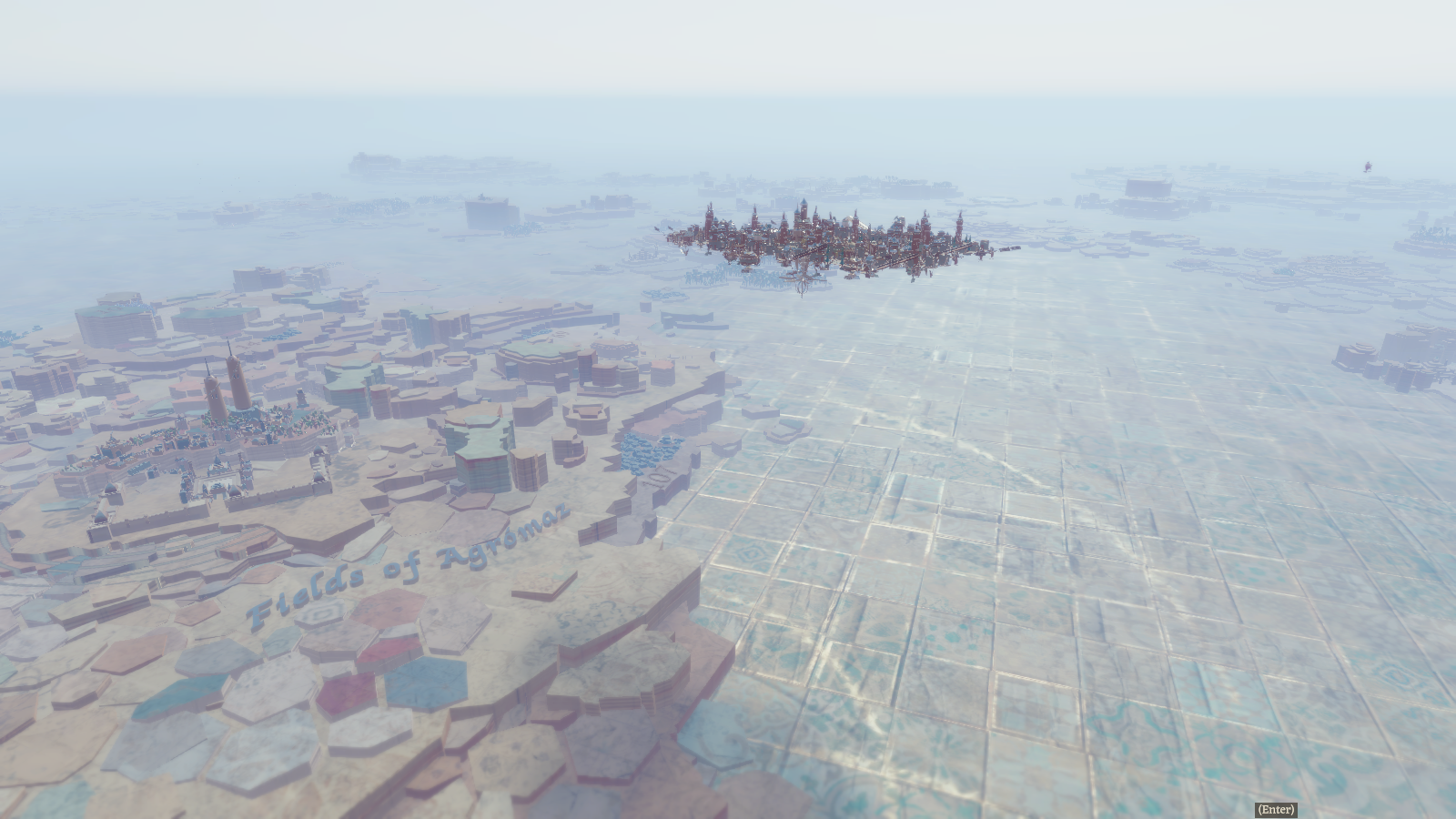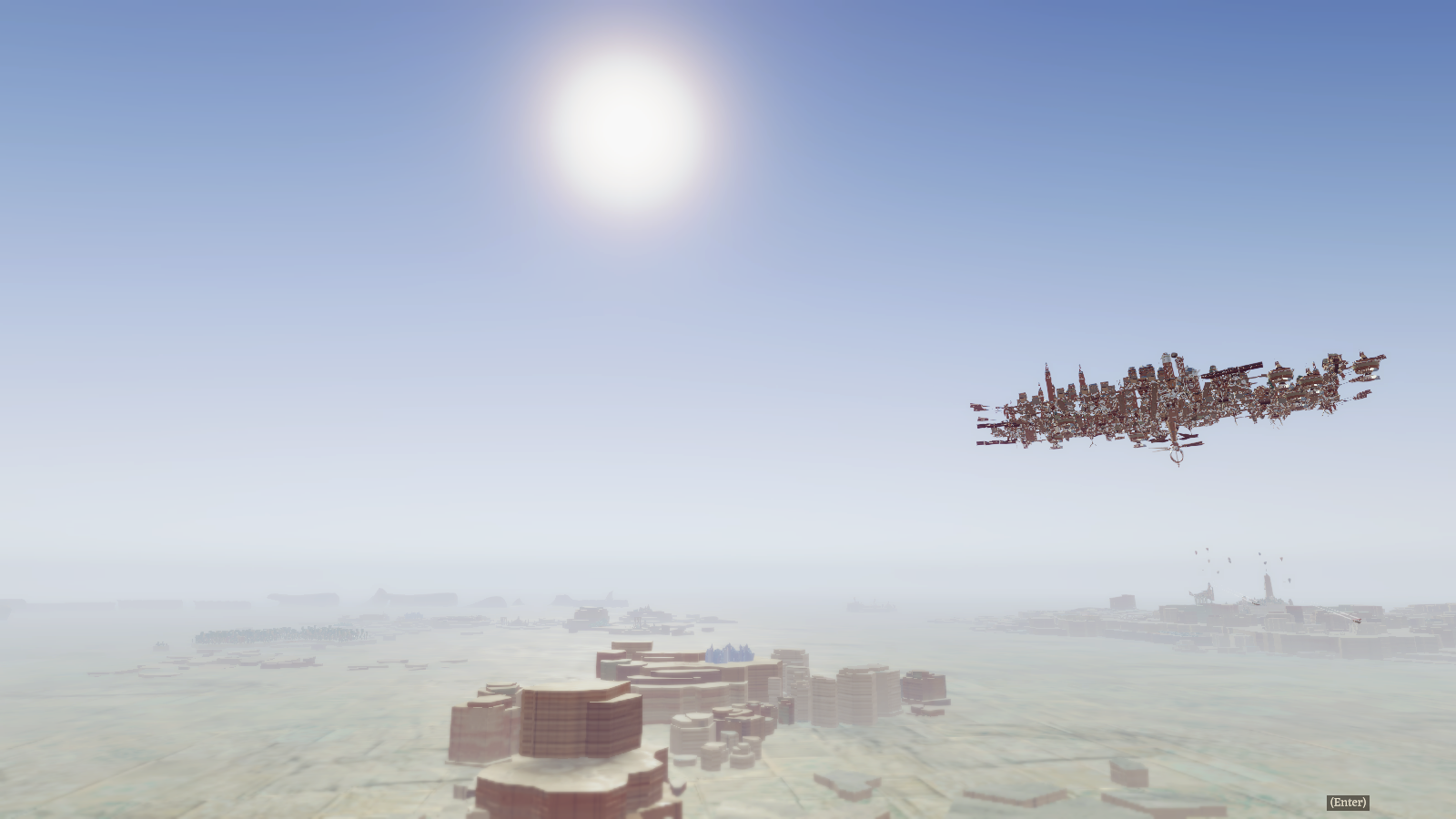

Right when you boot up the game, Airborne Kingdom makes a strong first impression with its art direction and premise. These are thankfully backed up by an impressive gameplay system that switches up the city builder genre in interesting ways. Even as someone who doesn’t generally play city builders, I can confidently say that this is a title worth checking out for fans of the genre.
On a basic level, Airborne Kingdom has many of the features you can expect from a game of this type. You start off with little more than a town center and a small selection of villagers, and you are asked to steadily build a prosperous city on top of this limited infrastructure using whatever resources and personnel you can find. What separates this game from other city builders is that your city is, as the title suggests, airborne, which means that it can be physically transported to multiple locations across a vast open world. This ends up influencing the gameplay significantly; rather than being able to click and drag across the landscape and interacting with it like an omnipotent being, players have to move the city close to caches of resources and landmarks in order to collect or identify them. Not only does this gameplay nuance make the process of gathering resources and discovering new places feel more natural, but it also presents the additional challenge of having to account for travel distance when managing the constant consumption of resources, which makes the multitasking-centric gameplay loop both more complicated and more engaging. It also has the added benefit of making both the city and the landscape visible at nearly all times, which simplifies the multitasking process since the player rarely has to take their focus away from one of these elements to focus on another.


The unique premise also complicates the decision-making process in other ways. On top of the constantly decreasing amount of food and water, the city also continually consumes coal to stay afloat, so players need to keep constant tabs on these resources. The speed at which the city travels gradually decreases as it grows, and while you can increase it with certain constructions, those also consume resources and, most crucially, citizens needed to gather those resources in the first place. Each building and construction added to the city also affects its weight distribution, and if the city is tilted too far to one side, citizens will instantly become disgruntled and even leave if unattended. The game really challenges players to think about the logistics of keeping an airborne city afloat, and it’s inherently satisfying to come to grips with a complex set of rules governing such an abstract idea. This sense of satisfaction is oddly amplified by the harsh punishments for failure; citizens who leave your city due to unmet needs or sloppy construction can have massive ramifications, as fewer citizens will be available for resource gathering and facility management. Failure to keep tabs on these myriad priorities can easily result in a cascade of errors that may take a significant amount of time to correct. While this can and does get frustrating, it feels all the more rewarding when city development goes well. Getting to a point of stability in which you rarely have to worry about dwindling resources or dissatisfied citizens really does feel like you lifted a huge weight off your shoulders, and that’s a positive feeling well worth the struggle.


As mentioned before, the aesthetics of Airborne Kingdom add significantly to the experience. The entire world is set up to look like an ancient map; the ground is littered with abstract patterns and massive words that label key landmarks. Furled-up strips of paper mark the edges of the world, and the ground has a mostly uniform color scheme that contributes further to the map aesthetic. Not only does this art style choice lead to a fantastic sense of mysticism and wonder, but it also serves to enhance the gameplay. The simple colors and the gigantic labels make every landmark and resource cache easily identifiable from a distance, which greatly reduces confusion on where to go next. The art style’s ability to visually impress while also subconsciously guiding players at all times makes it a phenomenal success on all fronts.
As well-considered as the game is, it is unfortunately hampered by some basic issues. Navigation feels somewhat unintuitive, which at least partially stems from the lack of a minimap. While this by itself is not a problem, having to manually open up the map feature while juggling so many other competing priorities feels cumbersome. It does not help that there is seemingly no way to adjust the zooming of the map, which means that if players need to travel a long distance, they will constantly have to check and scroll across the map to make sure they are headed in the right direction. In addition, while the remaining amounts of your core resources are displayed at the top of the screen, the amounts of less important resources are hidden behind a submenu. Again, this is not inherently problematic, but the game doesn’t even display these amounts when you’re selling resources to a kingdom market, leaving players to essentially guess how many of each resource they have left if they sell in bulk. The game’s biggest problem, however, is that the quests required to finish the game all essentially boil down to finding landmarks and providing materials to construct something. This is actually less of a problem than it initially appears since the moment-to-moment gameplay loop does more than enough to keep the brain occupied, but more varied quest objectives would have nonetheless gone a long way toward improving the experience.


In the end, however, the flaws are never significant enough to undermine how solidly constructed Airborne Kingdom is. Its unique premise and the ways it capitalizes on that premise really do take the city builder genre to new heights.
Score: 8 out of 10
Reviewed on Windows 10 PC
Play games, take surveys and take advantage of special offers to help support mxdwn.
Every dollar helps keep the content you love coming every single day.
